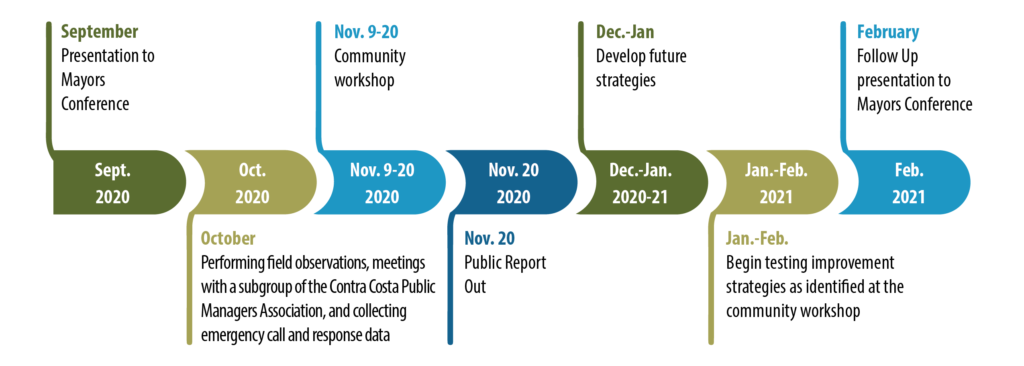Contra Costa, Bay Area Health Officers implement Newsom’s new regional Stay-At-Home order starting Sunday
Friday, December 4th, 2020
Not waiting until local hospitals are near crisis to act
By Contra Costa Health Services

Public Safety Alert text sent Friday afternoon, Dec.. 4, 2020.
Yesterday, Governor Newsom announced that all sectors other than retail and essential operations would be closed in regions of the State where less than 15 percent of ICU beds are available under a new Regional Stay-At-Home Order. Although health officials throughout the Bay Area are glad to see the State take action in light of the rapidly escalating surge in hospitalizations statewide, many believe even more aggressive action is necessary in the Bay Area to slow the surge and prevent our local hospitals from being overwhelmed. (See related article)
Rather than waiting until Intensive Care Unit (ICU) bed availability reaches critical levels and delaying closures that are inevitable, the Health Officers for the Counties of Alameda, Contra Costa, Marin, San Francisco, and Santa Clara as well as the City of Berkeley are jointly announcing that they will implement the State’s Regional Stay Home Order now.
“It takes several weeks for new restrictions to slow rising hospitalizations and waiting until only 15 percent of a region’s ICU beds are available is just too late,” said San Francisco Health Officer Dr. Tomás Aragon. “Many heavily impacted parts of our region already have less than 15 percent of ICU beds available, and the time to act is now.”
“We are seeing a surge in COVID-19 cases and hospitalizations here in Contra Costa County and across our region,” said Contra Costa County Health Officer Dr. Christopher Farnitano. “The number of patients hospitalized with COVID-19 in our county has doubled in just the past couple of weeks, and we are at risk of exceeding our hospital capacity later this month if current trends continue.”
“We cannot wait until after we have driven off the cliff to pull the emergency break,” said Santa Clara County Health Officer Dr. Sara Cody. “We understand that the closures under the State order will have a profound impact on our local businesses. However, if we act quickly, we can both save lives and reduce the amount of time these restrictions have to stay in place, allowing businesses and activities to reopen much sooner.”
“Rising hospitalization rates across the region threaten not only our community members with severe COVID-19, but anyone who may need care because of a heart attack, stroke, accident, or other critical health need,” said Alameda County Health Officer Dr. Nicholas Moss. “By acting together now we will have the greatest impact on the surge and save more lives.”
“Each of us can fight the spread,” said Dr. Lisa B. Hernandez, the City of Berkeley Health Officer. “Keep your family safe by avoiding even small gatherings outside of your household and not traveling. We don’t want holiday gatherings and travel to create a spike of cases on top of the surge we’re already seeing.”
“Although Marin has fared better than some other counties in our region over the last few weeks, we know it is only a matter of time before rising case and hospitalization put pressure on our hospitals too,” said Marin County Health Officer Dr. Matthew Willis. “We must act now, and must act together to ensure all hospitals in the Bay Area have the capacity they need to care for our residents.”
Consistent with the State framework, the six jurisdictions are working to ensure that all sectors have at least 48-hour notice of these closures. Most of the Bay Area Health Officers will implement the State’s Regional Stay At Home Order as of Sunday December 6, 2020. In Alameda County, it is scheduled to take effect on Monday, December 7, 2020, and Marin County’s order will take effect Tuesday, December 8. The new restrictions will remain in place until January 4, 2021.
The sector closures and restrictions on activity under the State’s Regional Stay Home Order are described here.
































